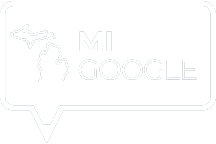Teaching World Language in the age of Google Translate
Language instruction has changed now that technology is readily available to both teachers and students. Access to relevant resources and the ability to connect with native language speakers are two positive ways language instruction has changed in the past twenty years. Some of these resources have made life more difficult for language teachers, however.
Easy access to resources like Google Translate, Photo Math, Wolfram Alpha, and automatic spell check are forcing teachers to re-think the true purpose of their course. This part of our conversation goes well beyond world language classes. It directly applies to math, grammar, and other “foundational” skills that must be mastered by students.
What should a teacher do when a students argues that they don’t need to learn a second language, or how to multiply because they have access to a smartphone or laptop? Every teacher needs to be able to answer this question. Bethany has a great response that might inspire yours!
World Language technology tools for Chromebooks
I asked Bethany to share some of her favorite world language technology tools for Chromebooks. Her first tip, about configuring your device to use the US international keyboard, was a new one for me! Check out the link at the bottom of this page for instructions on how to switch to the US international keyboard on a Chromebook!
The keyboard shortcuts for accent marks are different for each device that you use (Mac, PC, iPad, etc). Bethany has created a printable list of accent mark shortcuts that you can download by clicking below!
Bethany shared several of her favorite world language technology tools including Google Arts & Culture, Google Earth, and Voice typing in Google Docs. Each tool allows student to explore language and culture, check their work, or collaborate together.
World Language lesson ideas
When you listen to my conversation with Bethany, I think you will be impressed by some of the creative, non-traditional ways she is using common tools like Google Docs, Presentation, and Google Forms. She isn’t using lots of language-specific apps and extensions. Instead, she is applying readily accessble products in some creative ways.
One world language lesson ideas that she shared is using the live Q&A feature in Google Presentation to keep students engaged. Students submit written responses to questions in her slide presentation which she can immediately view and provide feedback to students.
Bethany also recommends the use of Google forms as a great world language technology tool. Her students create short surveys using Forms which they share with one another, compile the data, and present the results orally to the rest of the class.
The tool that pulls all of these different lesson resources together is Google Classroom. All of her links, presentations, and assignments are posted in Google Classroom so that students can access everything in one place.
Language teachers, I hope you enjoy my conversation with Bethany Thompson. But even if you don’t teach world language, I think you will be inspired by the creative ways that Bethany is challenging her students. Technology is a tool, not a magic wand.
You can connect with Bethany on Twitter (@bthompsonedu) and get her latest technology insights on her blog, languagemakerspace.com.








